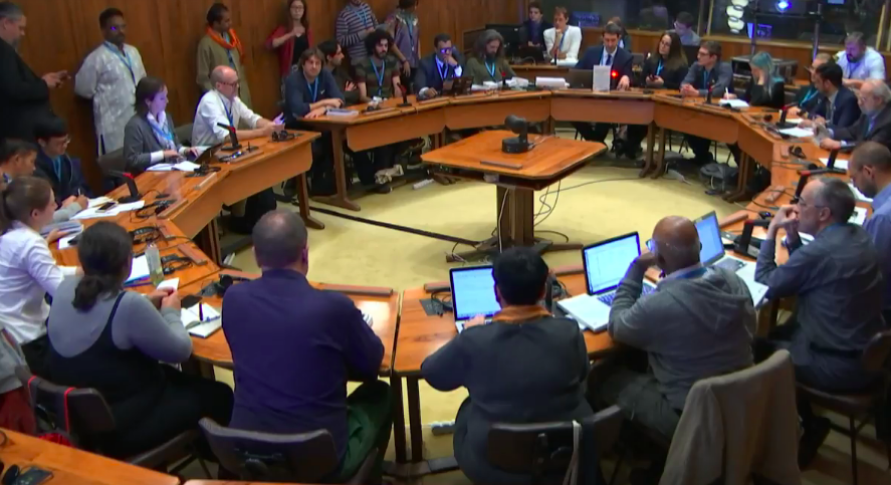
Developing connectivity projects that are “for the community with the community by the community” is crucial as we work to connect the next billion, stressed Jane Coffin of the Internet Society (ISOC) during today's meeting of the Dynamic Coalition on Community Connectivity (DC3). Established in 2015 to provide a space for collaborative, multistakeholder conversation on community network development, DC3 is a working group that analyses the potential of community networks to enable connectivity in rural, remote and underserved areas, as well as give communities the power to own, manage and govern their own networks.
During this year’s annual DC3 session, the coalition focused on unpacking its most recent publication, The Community Network Manual: How to Build the Internet Yourself, a guide which offers concrete instructions, toolkits and examples designed to help anyone build and manage their own community network. Each panellist was given an opportunity to briefly present their contributions to the text and provide updates about their ongoing work.
Moderator Luca Belli of Fundação Gertulio Vargas began the session with an acknowledgement of the group’s collaborative output which, to date, includes three volumes and a declaration. He highlighted the increased prominence of community networks in global internet policy debates as evidence of DC3’s success. “The fact that we have aroused the interest of the ITU [International Telecommunication Union] is a huge success,” he said, and "an example of how we can work together and coordinate.”
The first half of the session focused on contributors to Part I of the manual: How to Build Your Community Network. Panellists included Stavroula Maglavera, who spoke about “The MAZI Toolkit for Do-It-Yourself Networking," and Spencer Sevilla of the University of Washington, who gave a brief overview of his chapter on building small-scale LTE networks. Nicolás Echániz of AlterMundi, developer of the LibreRouter, showed off the latest prototype of the device, now in phase two of development, and explained the process of developing mesh networks. He noted growing interest from local communities in purchasing the router, which will become available next month, with 3,000 units already spoken for.
Representing Part II of the book, titled Scalable, Sustainable and Law-compliant Community Networks, Roger Baig Viñas of guifi.net explained why scaling up is crucial for the sustainability of community networks. “Why scale up? The easy answer is the bigger we are, the stronger we are,” he stressed. The process of expanding, however, is multifaceted and must be approached from a “social, legal, technological and cross-disciplinary” standpoint to be successful.
Highlighting the benefits of organisational support and coordinated legal efforts, Félix Tréguer of the Centre national de la recherche scientifique (CNRS) and netCommons cited the example of the Fédération des Fournisseurs d'Accès Internet Associatifs (FFDN) for possible replication, “because it unites various organisations and works in a very flexible manner,” while Virginie Aubrée of the University of Trento and netCommons raised the need for collective frameworks and standardised protocols to respect existing legal frameworks and build “capacity to influence how policy is made.” Other contributors included Libraries Without Borders and Partnership for Public Access, who underscored the need for partnerships with public institutions to provide access to quality information and digital skills as a foundation of “democratic participation."
The scope and diversity of the projects touched on by DC3 contributors demonstrated the exciting possibilities offered by this coordinated approach and revealed a growing momentum in the community network landscape, in terms of policy, technical and organisational goals. As Belli noted, it's through these kinds of fruitful conversations and coordinated efforts that progress is made. To move forward with community network models, “it's very good to have fresh new ideas oxygenating the way we think.”
Find out more about DC3's work here.